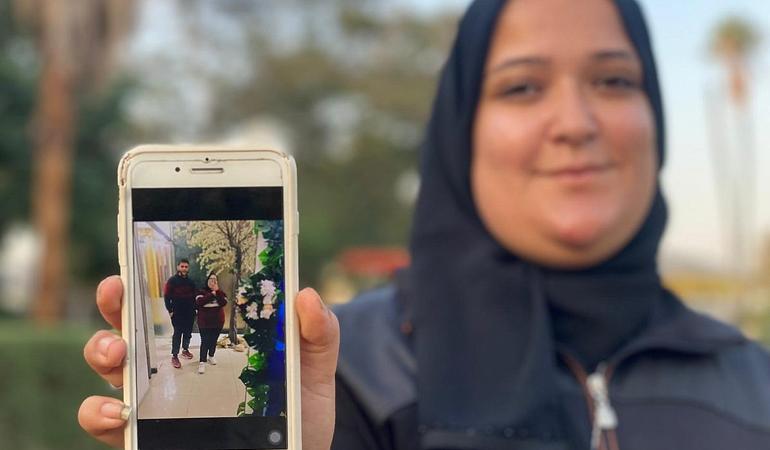
A Gaza, la tragedia dei dispersi e dei corpi senza nome. Reportage dalla Striscia



Aggiornato il giorno 26 settembre 2025
What happens to Lgbtqia+ people in prison? Certainly, identity does not disappear and sexual orientation and gender identity enter together with the person entering the gate. Too often, however, they are not able to cope with it and become a reason for discrimination, loneliness, denial of rights. This is an issue that is little told, for which there is a lack of numbers, where testimonies are difficult to collect and, consequently, policies are still partial and often insufficient. Antigone has told about this in a report on Italy, recently published in the framework of the project financed by the European Commission "Strengthening the rights of Lgbtiq detainees in the EU".
There are 88 gay men in prison, and 76 transgender women. Data on lesbians, intersex, and non-binary people is lacking.Data from the Ministry of Justice
A report that starts from an observation, namely that how many Lgbtqia+ people are detained in Italian prisons today, we do not know for sure. To a request for generalised civic access to records (Foia) submitted by the Italian association Antigone, the Ministry of Justice replied that at the end of July 2025 there were 88 gay men in prison and 76 trans women.
However, there are no numbers on, for example, lesbian women or intersex or non-binary people. And those on gay men, may not capture the real situation since in many cases the need for people to 'hide' may prevail, knowing how much their coming out may lead to discrimination, but also to hostile and even violent acts against them. This absence, however, is not neutral: it makes people invisible, and invisibility becomes the first obstacle to recognising rights, vulnerabilities, specific needs.
Telephones are used in Italian prisons because prisoners are isolated from the world
When a trans person enters prison, the criterion remains that of biological sex. Thus, a trans woman is placed in a male institution, and a trans man in a female section, regardless of the personal or juridical path taken. Even those who have obtained registry rectification often encounter resistance or restrictive interpretations. The result is a placement that denies identity.
Then there is another general fact, namely that trans women are generally placed in special sections and can hardly, except in some cases and for specific activities, meet other people. This turns into a form of de facto isolation and a reduction of opportunities that would instead be important for their social reintegration. This does not apply to trans men who, as they do not constitute a problem in terms of security, do not need an ad hoc placement.
The so-called "homogeneous protected sections", which host only trans women or only gay men, were created to protect, but end up isolating
Trans women or gay men, therefore, are generally placed in so-called 'promiscuous protected sections' where other categories of inmates at risk of aggression or discrimination, such as people accused or convicted of sexual misconduct or former members of the police force, are also located.
Since 2018, then, so-called 'homogeneous protected sections' have been created, which only house trans women (there are six of these throughout Italy) or gay men (there are three of these). In theory this would seem to be an achievement, while in practice protection often translates into isolation. In the protected sections, treatment and training opportunities are reduced, cultural activities are scarce, and contact with the rest of the population is limited. Those placed there end up in a sort of prison within a prison: protected from risks but deprived of equal opportunities. A protection that becomes, in some cases, segregation.
"There is a suicide emergency in Italian prisons", reports the association Antigone
The report edited by Antigone also emphasises other everyday structural barriers. For example, incidents of misgendering, which means referring to the person using the wrong names and pronouns, which do not refer to the identity that person has claimed. Sensitivity varies greatly from institution to institution, but staff training remains patchy.
Added to this are difficulties in access to health care: hormone therapies interrupted or delayed, absence of specialists, continuity of care compromised by transfers and bureaucracy. Several years ago, in Sollicciano prison, I met a trans prisoner who showed scars on her arms and told the delegation with whom we were visiting the prison that they were due to cuts she had self-inflicted in order to demand attention to her request to receive the hormone therapy she needed. For many people, living in prison means facing a double penalty: the restriction of their freedom and the denial of their identity.
Life imprisonment, the slap of remorse
Despite the critical aspects, some positive experiences exist. In some prisons, collaboration with associations such as Arcigay has led to workshops, support groups, moments of confrontation. Some institutions have experimented with training courses for prison staff, with the aim of reducing discrimination and raising awareness. These are partial experiences, but they show that a more inclusive prison is possible.
Exceptions, however, are not enough. Without a qualitative leap at the national level, the fate of LGBT+ people in prison remains entrusted to the sensitivity of individual directors or to the presence of external associations. Instead, structural policies are needed that cover some fundamental aspects. Data collection: systematic monitoring, on a voluntary basis and with respect for privacy, to really know the extent of the phenomenon; health: hormone therapies and specialised assistance must be guaranteed without interruption; compulsory staff training: so that respect for names, pronouns and identities does not depend on the good will of the individual agent; equal opportunities: those who live in a protected section must be able to access training, cultural and work activities like the rest of the inmate population.
Guaranteeing the rights of LGBT+ persons in prison is a test of a prison system's ability to respect human dignity. If a prison knows how to protect those who are most vulnerable, then it will be fairer for all. If, on the other hand, protection turns into exclusion, what emerges is a system that produces inequalities, not reduces them.
La tua donazione ci servirà a mantenere il sito accessibile a tutti
Mine antiuomo, piani sanitari segreti e finanziamenti "sostenibili": tutti i trucchi con cui l'Europa ci porta alla guerra
La tua donazione ci servirà a mantenere il sito accessibile a tutti